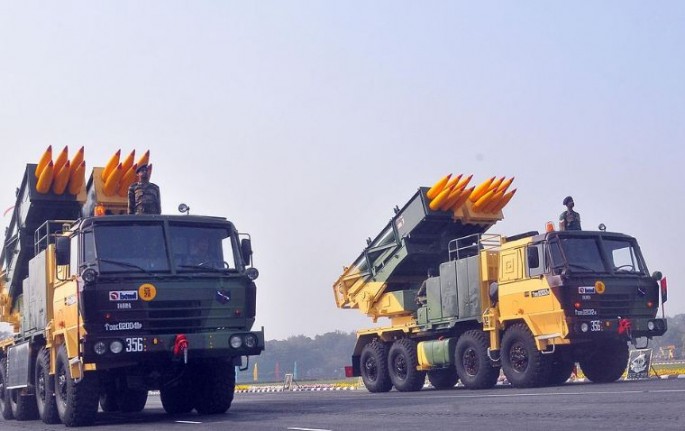The Indian Army is set to increase by over 10 times the number of regiments operating the Indian-made Pinaka Multi-barreled Rocket Launcher (MBRL) system that proved its worth against the Pakistan Army during the Kargil War of 1999.
The army said it plans to add eight more Pinaka regiments by 2022 in addition to the two operational regiments. It intends to have 22 Pinaka regiments by 2026.
Pinaka's fearsome battlefield reputation comes from its ability to saturate a target with massive fire. Each regiment consists of three batteries of six Pinaka launchers mounted on Tatra trucks. Each of these truck-mounted launchers is capable of firing 12 rockets in 44 seconds.
A Pinaka battery of six launchers can saturate an area with a size of 1,000 meters × 800 meters.
This means each regiment can deliver 216 Mark-I rockets, each with a 250 kg high-explosive warhead, at any one target 40 km away. The Mark-II extended range version of the new rockets that will arm 12 of the new regiments has a range of 70 km.
All 22 Pinaka regiments will, therefore, deploy 4,752 rockets between them. Since 2014, Indian arms factories have been producing 5,000 rockets annually.
During the Kargil War, Pinaka MBRL's played a yeoman role in destroying Pakistan Army fighting positions on mountain tops.
The Indian Cabinet has approved $441 million for raising the third and fourth Pinaka regiments. The Defense Acquisition Council in November cleared a Request for Proposal for six more regiments at a cost of $2.2 billion.
The Pinaka system was designed and developed by Tata and Larsen and Toubro (L&T) in cooperation with the Armament Research and Development Establishment of the Defense Research and Development Organization (DRDO).
Pinaka is a complete MBRL system. Apart from the six launcher vehicles, there are six loader-replenishment vehicles; three replenishment vehicles; two Command Post vehicles with Fire Control computers and the DIGICORA MET radar.



























